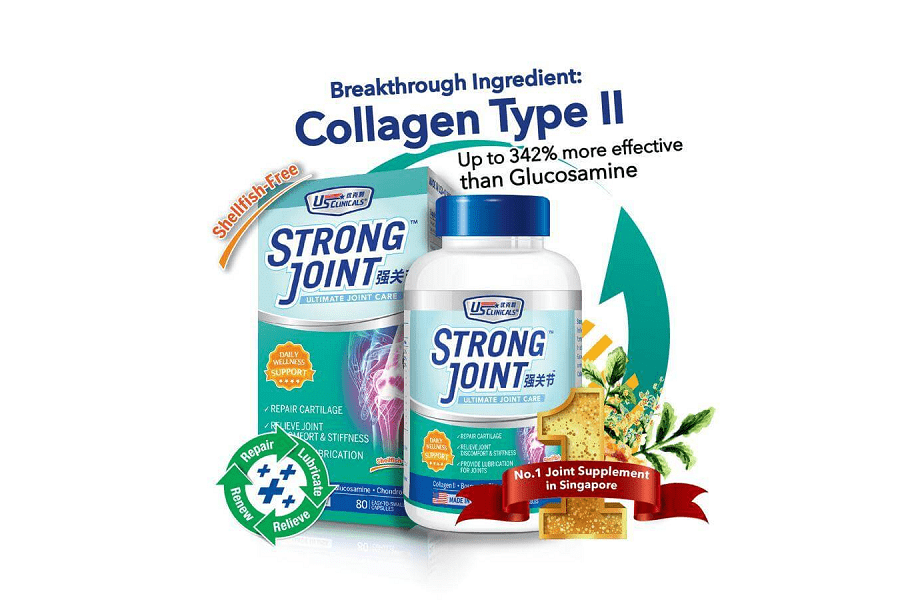Glucosamine is a molecule, or a natural chemical compound, that locates itself inside our bodies. At its most essential function, it serves as part of the cartilage, the tissue that cushions the bones at every joint in our body. As we age, the cartilage undergoes wear-and-tear and our bodies produce less glucosamine. This gradual reduction in glucosamine level, when ignored, allows our joints to deteriorate over time.
For this reason, glucosamine supplements have become prevalent. Its popularity hinges on its effectiveness and widespread use in treating diseases for the joints and bones of our bodies. If not for this purpose, glucosamine is also a preventive remedy for inflammation and osteoarthritis, among others.
As a supplement, we cannot get it from eating certain types of food. The shells of shellfish, certain animal bones, and different types of fungi are the common sources of glucosamine supplements. The Mayo Clinic states that there are a handful of distinct forms of glucosamine. These variations include: glucosamine sulfate, glucosamine hydrochloride, and N-acetyl glucosamine.
How Do Glucosamine Supplements Work?
As mentioned earlier, osteoarthritis is among the most common ailments that glucosamine can treat. Osteoarthritis is a form of arthritis; one wherein there is a breakdown of cartilage in the joints of the body. When left untreated, inflammation of the joint occurs. However, research shows that when taken orally, the supplement can help alleviate the disease’s degenerative effects on the joints, such as our knees, hands, and elbows.
Apart from osteoarthritis, there also exists some research, albeit limited, on glucosamine having effects on treating the following: rheumatoid arthritis, injuries and longstanding back pain, and temporomandibular joint problems. However, there has yet to be substantial clinical evidence to support the claim a hundred percent. The Mayo Clinic’s take, though, is that it is safe, in general, to use glucosamine as a pain relief medicine for those suffering from osteoarthritis. That said, it is always best practice to consult with your physician.

Below is a list of the ways that glucosamine can affect our joints.
-
Improves our joints and makes it stronger –
There are a number of studies that show how glucosamine supplements can protect our joints through the prevention of cartilage degeneration. It protects the articular cartilage and lessens the friction between our joints, which then allows us to move without any pain. A study on cyclists show that taking 3 grams of the supplement every day helped reduce the tissue loss in their knees by 27 percent.
-
Treats inflammation in our joints –
While there are discussions about its viability, there are studies that show how much of an impact glucosamine supplements can have on bone formation. Glucosamine sulfate, for instance, can promote and control inflammatory symptoms due to osteoarthritis. It is through the cellular level wherein the supplement helps increase alkaline phosphatase activity, which pertains to the presence of osteoblast cells, an integral part in the development of bone formation.
Used as maintenance for a variety of joint and bone disorders –
The Arthritis Foundation writes about the certainty on using glucosamine and chondroitin supplements for the treatment of joint pain, and disorders, such as osteoarthritis. Data from the NIH claims that at least 6.5 million adults have tried to use either supplement individually or in conjunction with each other. Since both glucosamine and chondroitin are compounds that we can naturally find in the body, many European countries recommend and prescribe these supplements. Through their anti-inflammatory components, known as chondrocytes, both supplements work by protecting the cells and maintaining cartilage structure.

With these three reasons to use glucosamine as a supplement for our joints, where is the ambivalence coming from? After all, if the medical community sees it as safe and effective, what reasons do we have to avoid it? And given this need for additional scientific validation, what is it then that we can expect when we take these supplements? WebMD.com cites the following symptoms:
- An upset stomach
- Heartburn
- Drowsiness and/or headaches
These symptoms – if they do occur – are mild and will only surface in high doses. Healthline.com writes that the typical dosage for glucosamine is no more than 1500 mg, which is safe to be taken at once, or staggered throughout the day in smaller doses, on a full stomach. They also add that glucosamine supplements work best when combined with chondroitin.
The Verdict on Glucosamine Supplements
Since there is no known cure for osteoarthritis, which can only worsen over time, taking glucosamine supplements is an option. It can potentially alleviate the suffering from the joint pain and even prevent certain diseases in the bones. Healthline.com provides evidence that taking glucosamine supplements on a daily basis can help these conditions improve, and large numbers have indeed shown recovery. The hesitation, it seems, stems from some people whose conditions did not show any improvement, which then warrants the call for more research. A valid point, but when we can no longer walk without seething in pain, what is there to lose?








